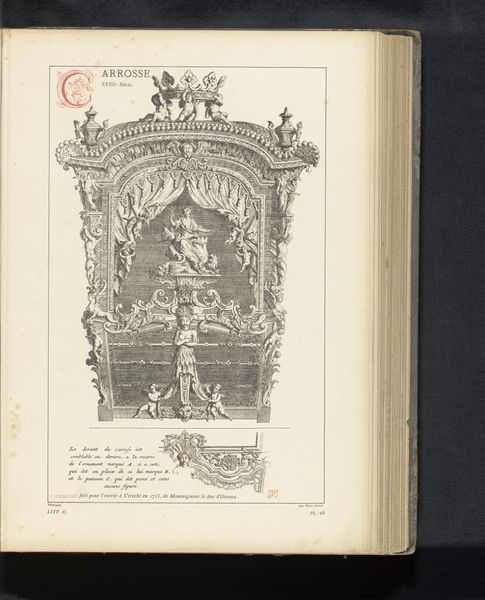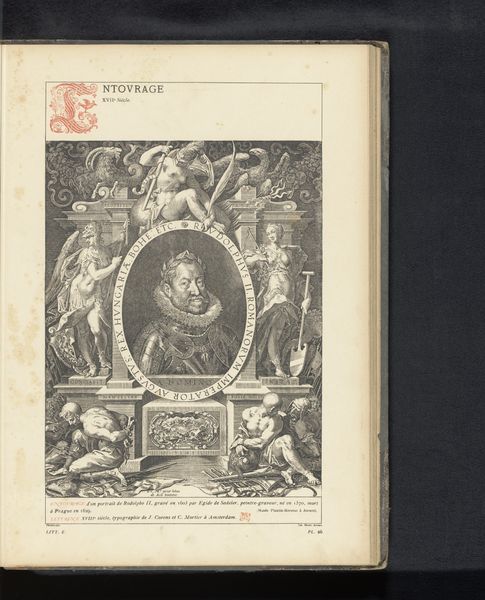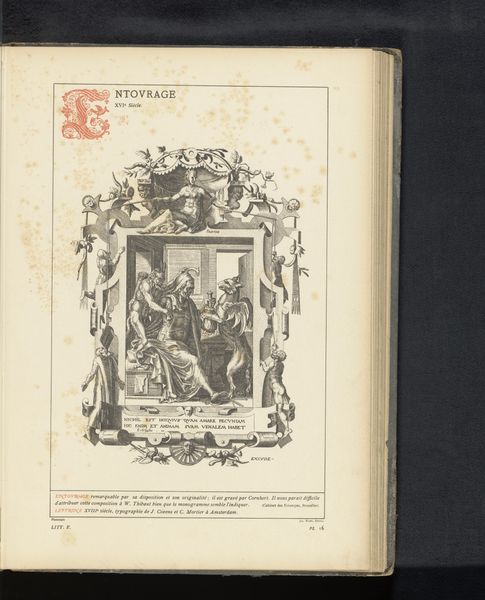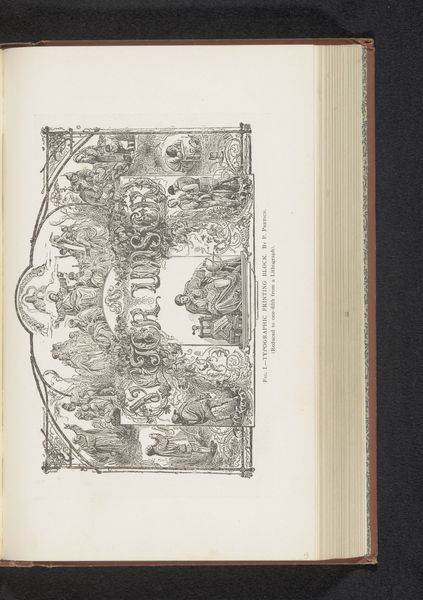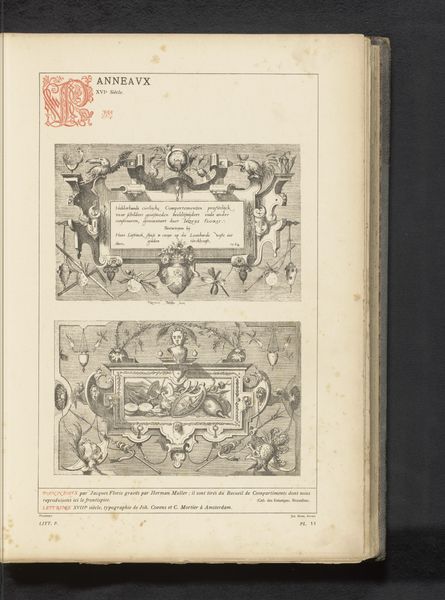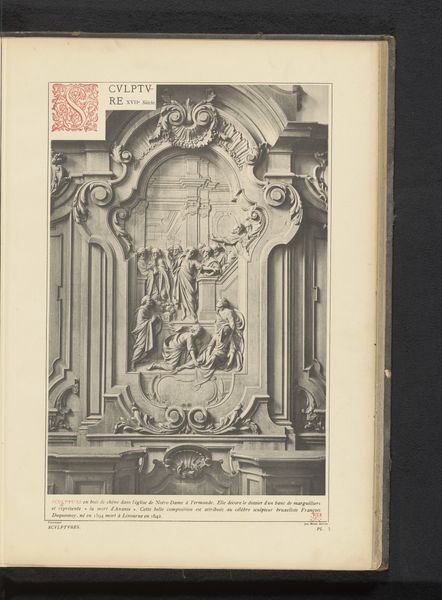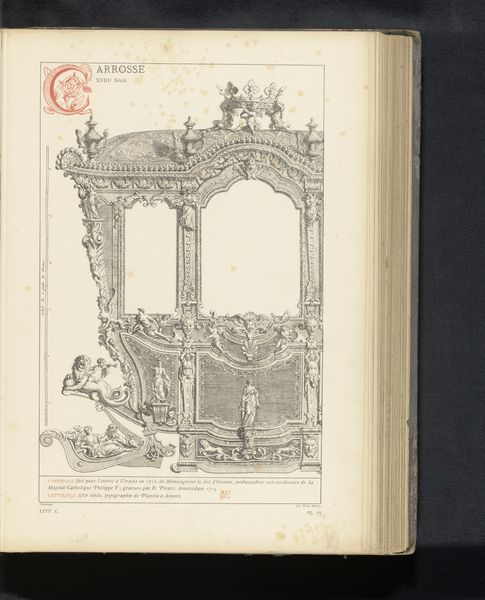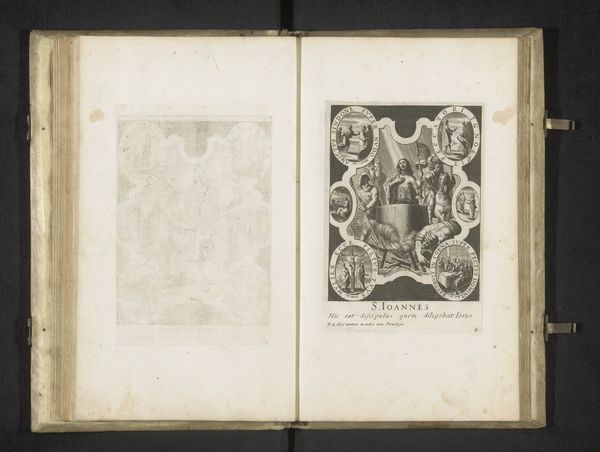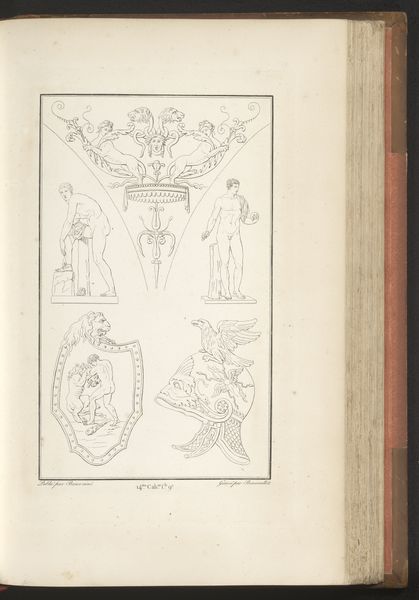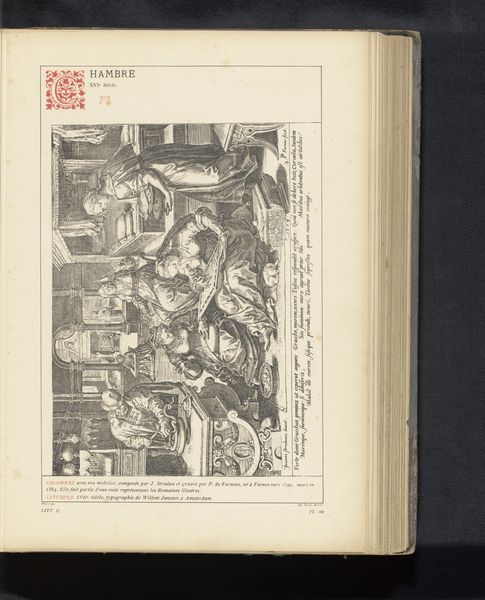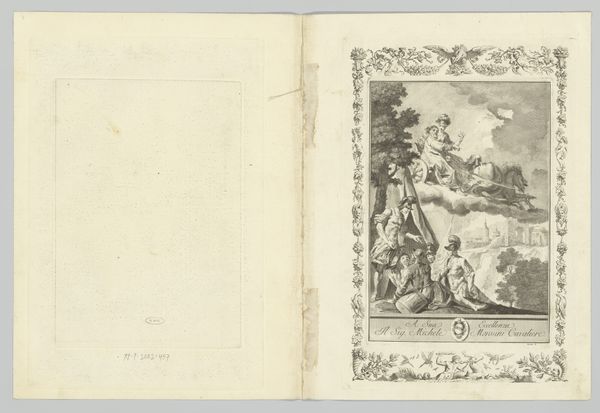
Reproductie van een prent met details van de koets van Filips V van Spanje tijdens zijn intocht in Utrecht in 1713 door Bernard Picart before 1880
0:00
0:00
Dimensions: height 345 mm, width 237 mm
Copyright: Rijks Museum: Open Domain
Curator: What strikes me immediately is the sheer flamboyance! Look at the ornate details; it feels like a glimpse into a world of pure spectacle and over-the-top grandeur. Editor: Precisely! We're looking at a reproduction of a print dating from before 1880, which meticulously details the carriage of Philip V of Spain as he made his entrance into Utrecht in 1713. It’s by Bernard Picart. The baroque style practically leaps off the paper, doesn't it? Curator: It does! The whole thing seems like a carefully choreographed performance. Even though it’s a still image, I can almost hear the trumpets blaring and see the crowds gasping. The engraving really captures the feeling of the time, all that power and self-importance. Editor: And Picart was savvy to present it this way. The image operates as political theatre, turning the monarch's arrival into carefully managed propaganda, visually communicating power, authority, and divine right. Curator: But is it just me, or is there something a little absurd about it all? The exaggerated ornamentation feels almost comical at times, like it's teetering on the edge of self-parody. Editor: That's a very modern reading. At the time, such displays were serious statements. These prints circulated widely, shaping public perception of the monarchy. Museums today inherited the duty to interpret artworks in a similar vein. Curator: I suppose! All those swirling figures... the cherubs, the nymphs, even the horses are acting. There's very little naturalism on display. I almost feel like I can't trust a single line I'm seeing here, which is interesting in its own right. Editor: It does force us to confront how images were, and continue to be, actively constructed. And it also provides us with invaluable insights into 18th-century Dutch society and political culture. Curator: Exactly, now that you point it out! It also provides a playful view of what it felt like to be in charge, and also a way to reflect upon current values... Editor: It seems as though the spectacle continues!
Comments
No comments
Be the first to comment and join the conversation on the ultimate creative platform.
